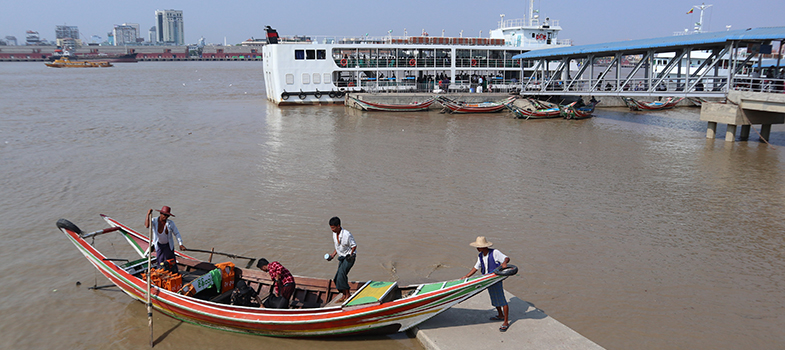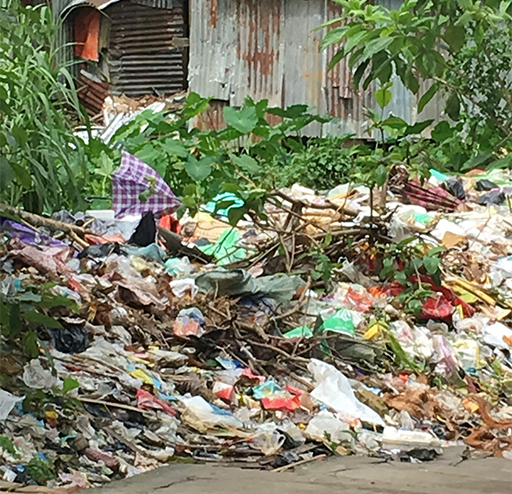4.3.4 Solid waste and sanitation management
Sanitation and waste management both refer to waste, but sanitation is primarily concerned with liquid waste and waste management is primarily concerned with solid waste. Liquid wastes are wastewater and sewage and include faeces and the contents of pit latrines and septic tanks. Solid wastes are anything in solid form that is discarded as unwanted, such as garbage, often disposed of in rivers and on unoccupied land, where it is often burnt.
Currently, about 7% of Yangon's population and 5% of Mandalay's population have access to modern sanitation facilities (IWRM, 2019). Solid waste management is also a pressing concern because of the widespread practice of open dumping of waste and limited reach of a sufficient collection service leading to surface and groundwater contamination. Building public awareness of good sanitation and waste disposal is undertaken by broadcast media such as MRTV, MWD. MRTV-4 but, without the corresponding provision of services, behavioural change is unlikely to follow.
Other waste management issues include landfills being almost at full capacity with increased potential for landfill fires, waste dumping without any compaction, methane production, and release of greenhouse gases (World Bank, 2019). Consequently, a plan is needed to manage solid waste, together with the maintenance of drainage systems and establishment of more treatment plants.
Question 2
What is the difference between liquid waste and solid waste? Match the following terms and definitions.
Using the following two lists, match each numbered item with the correct letter.
Liquid waste
Solid waste
a.Wastewater and sewage including faeces and the contents of pit latrines and septic tanks
b.Waste such as garbage, kitchen waste, crop waste, that is discarded as unwanted
- 1 = a
- 2 = b
4.3.3 Stormwater management

